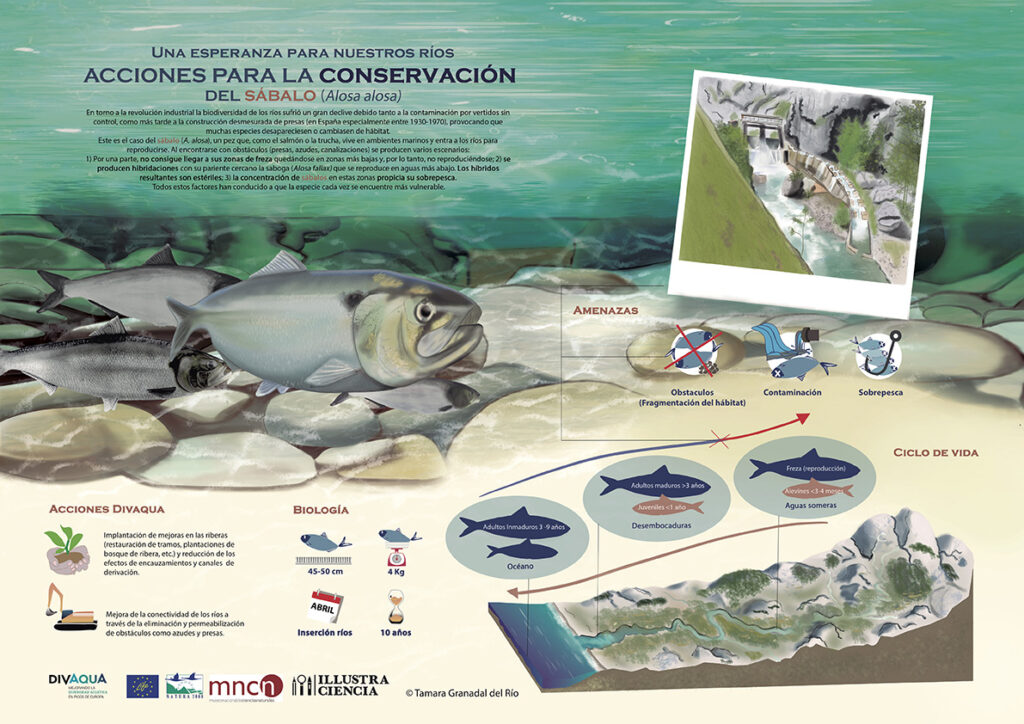Around the time of the industrial revolution, river biodiversity underwent a major decline due to pollution from uncontrolled waste disposal. Later on, excessive construction of dams (particularly in Spain from 1930-1970) led to the disappearance or change in habitat of many species.
This is the case of the allis shad (A. alosa), a fish which, like salmon or trout, lives in marine environments and returns to the river to reproduce. When it comes up against barriers (such as dams, weirs or pipelines), several different scenarios occur:
1) Firstly, it is unable to reach its spawning areas, forcing it to remain in areas lower down the river and preventing it from reproducing; 2) hybridisation occurs with its close relative the twaite shad (Alosa fallax), which reproduces in lower waters. The resulting hybrids are sterile; 3) the concentration of shads in these areas gives rise to over-fishing. All of these factors have resulted in the species becoming increasingly vulnerable.
